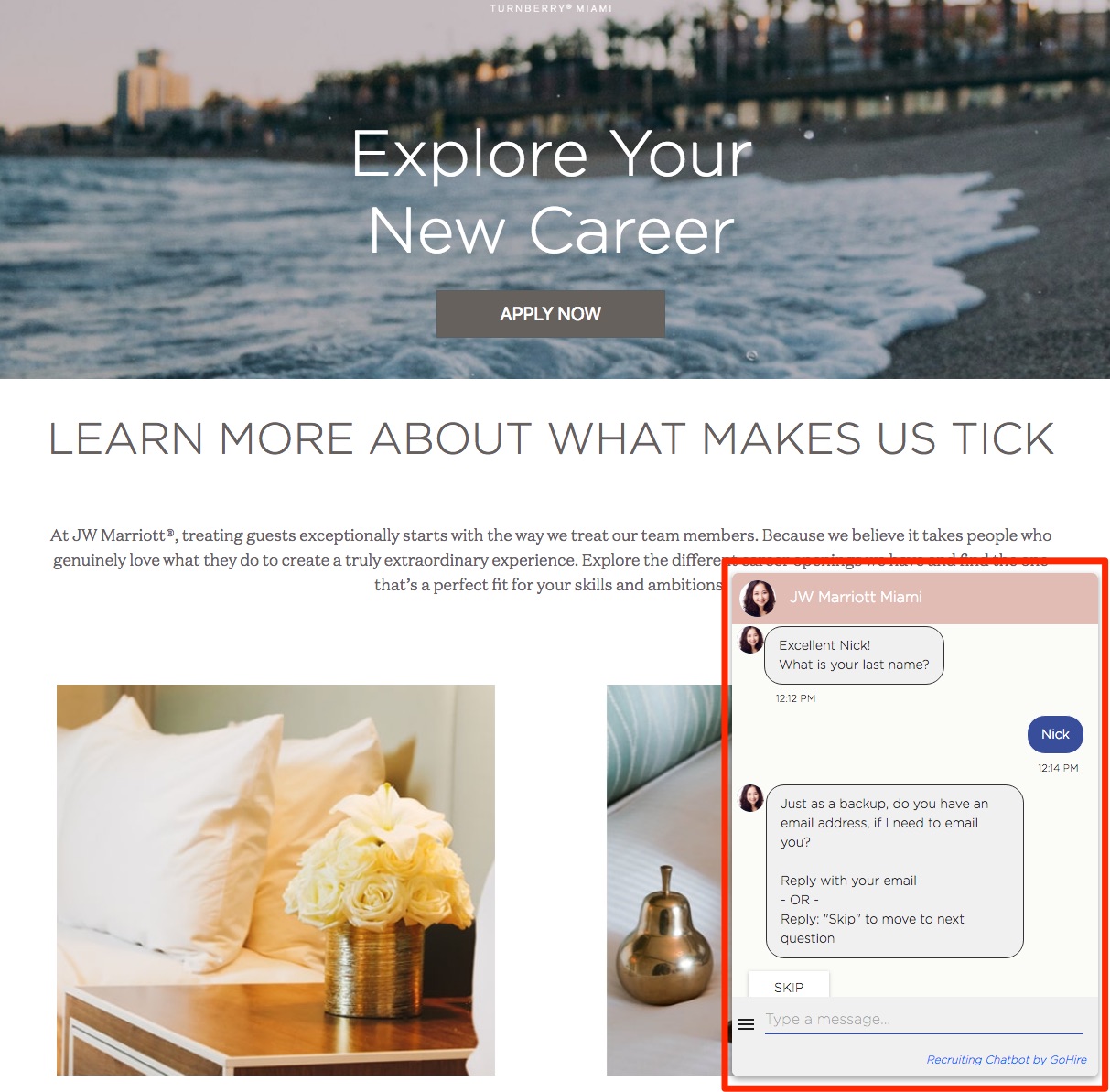- What’s the Difference Between a Job Description, Job Posting, and Job Ad - June 5, 2025
- Top 20+ Diversity Equity Inclusion Titles (with Descriptions) 2024 - October 18, 2024
- A List of Common Offensive (Exclusionary) Words Used in Job Descriptions (2024) - October 18, 2024
Chatbots is a new tech concept getting a lot of attention in recruiting and beyond. I don’t think that chatbots is the Holy Grail for any one thing in recruiting. I believe that Chatbots will instead become a ubiquitous interface for different parts of the recruiting process.
I’ve looked at a few uses of chatbots and see the main benefits affecting:
- Employer Branding — Help you stand out among the crowd (<1% of company career pages have a chatbot at this point)
- Talent community — Chatbots can sometimes get you candidate profile info more easily (through asking the candidate for micro-commitments of information (e.g. one field of information (like first name) at a time
- Candidate Experience — If done right, a chatbot can make the job search more of a conversation (which can be more natural)
Below are 5 examples of employers using Chatbots in the pre-application process.
1. Zappos
Zappos uses Chatbot app GreyScale as an alternative way for candidates to do a few things:
- To browse jobs — their “Match me to jobs” asks you for which department you’re interested in and then your # of years of experience. They then give you job postings related to those requirements.
- They answer the “Why work here” question and offer deeper links to their cultures and values and company description
- They answer the key questions around benefits, locations, visa sponsorship and status of an application
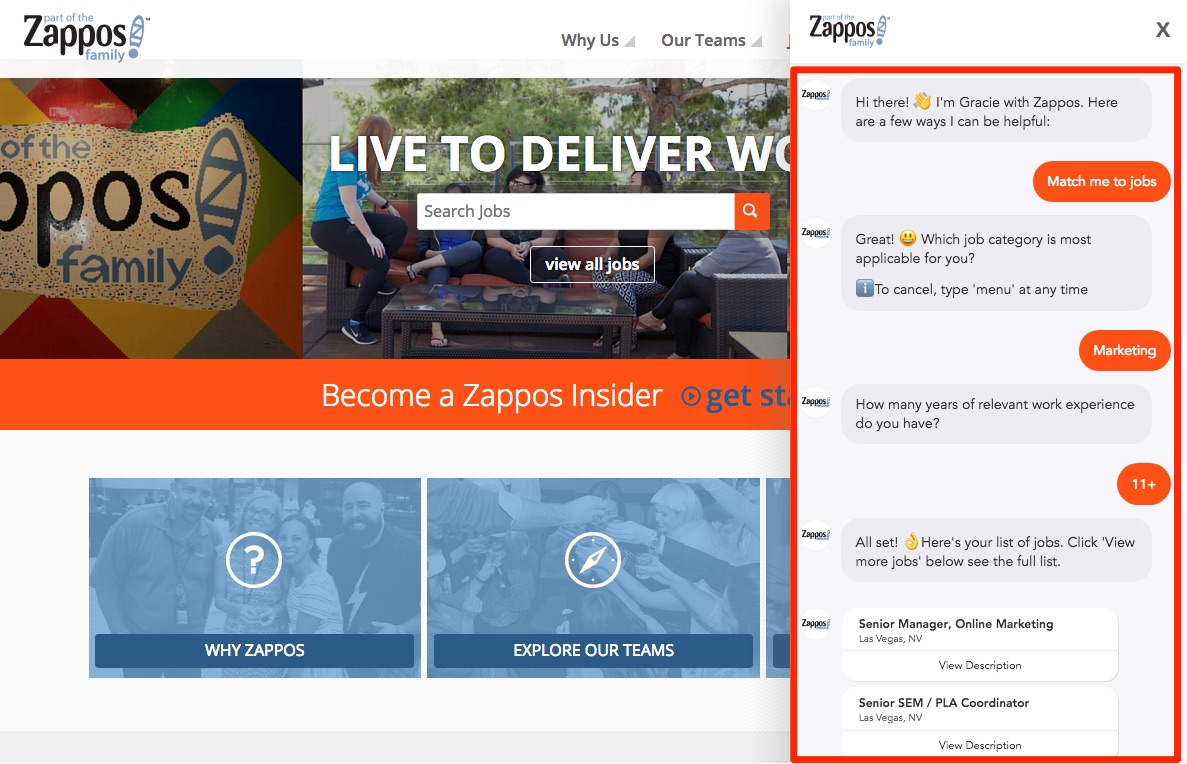
2. Pitney Bowes
Pitney Bowes uses the Allyo chatbot. Check out how they emphasize the “Search for U.S. Jobs” in the lower right-hand corner of their careers home page. It’s a more visible call-to-action then the old-fashioned search in the middle.
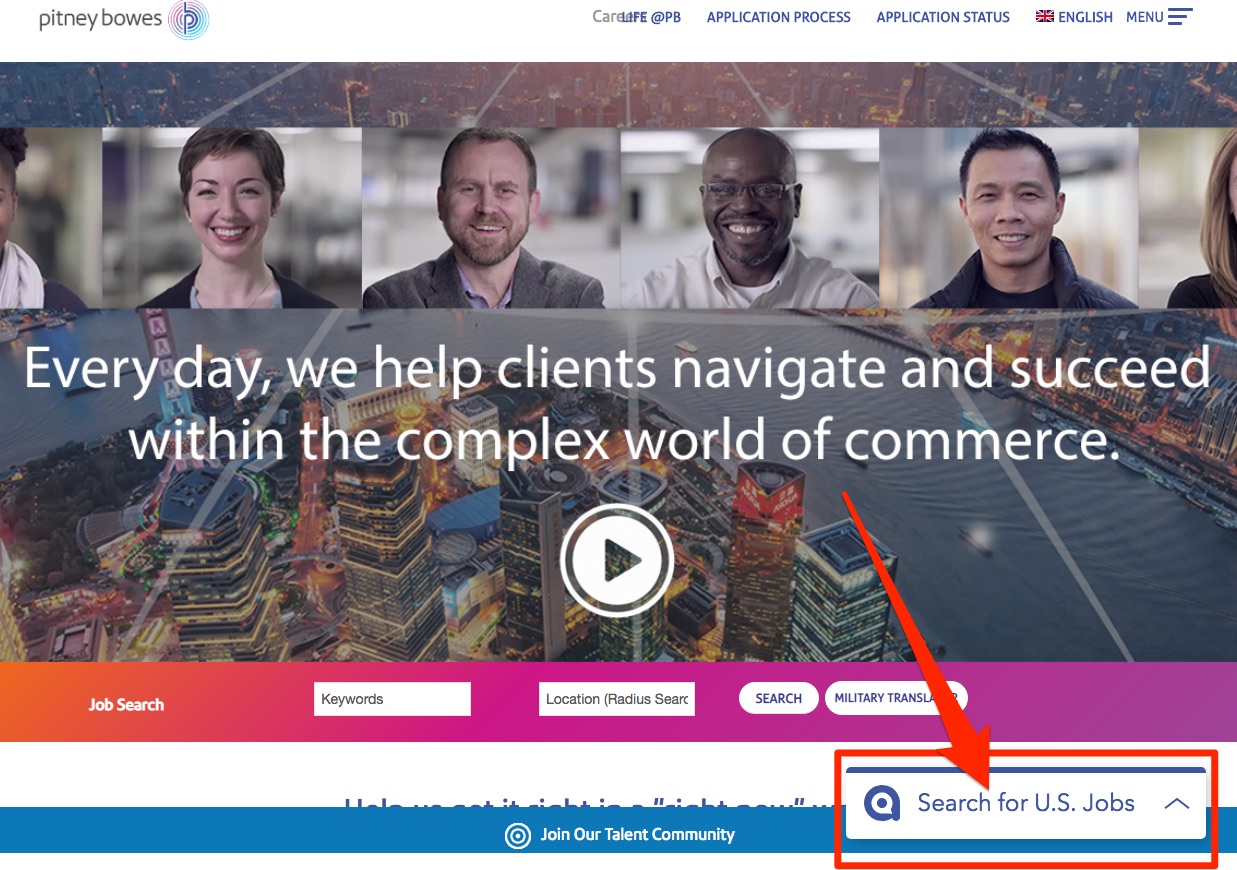
Clicking the “Search for U.S. Jobs” leads you to the chat box (below) where you can search for jobs (which leads to simple Taleo-based job descriptions). Or, you can ask general questions (like “What is the culture?”
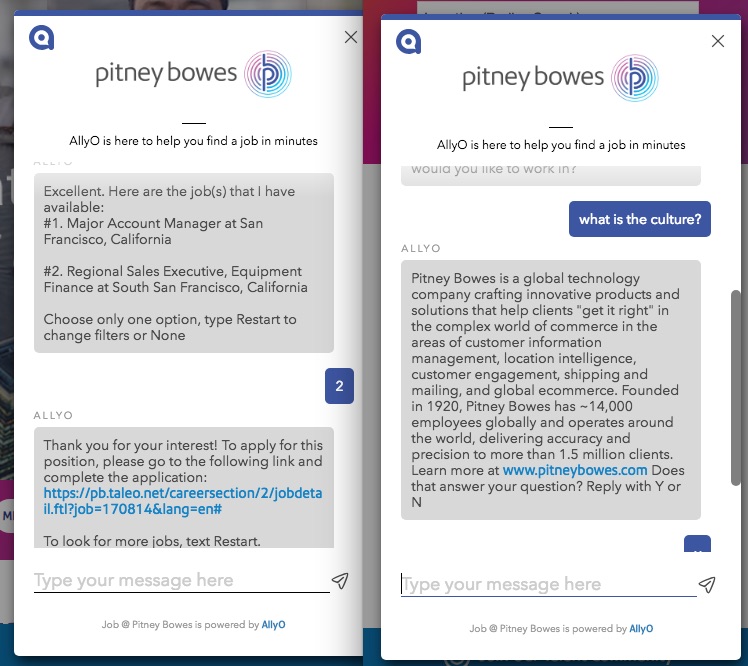
3. J.W. Marriott
JW Marriot Miami asks the candidate for small amounts of information to get on their talent community. Check out below — they start off by asking just for their first name. Then they ask for email. We in sales and marketing call these “micro-commitments”. JW Marriot uses the GoBe Chatbot by GoHire.
4. STRV
STRV takes an opened-ended “ask me anything” approach to their chatbot. I tried typing in “salary” and “benefits” and got useful answers .
They use a chatbot from jobpal
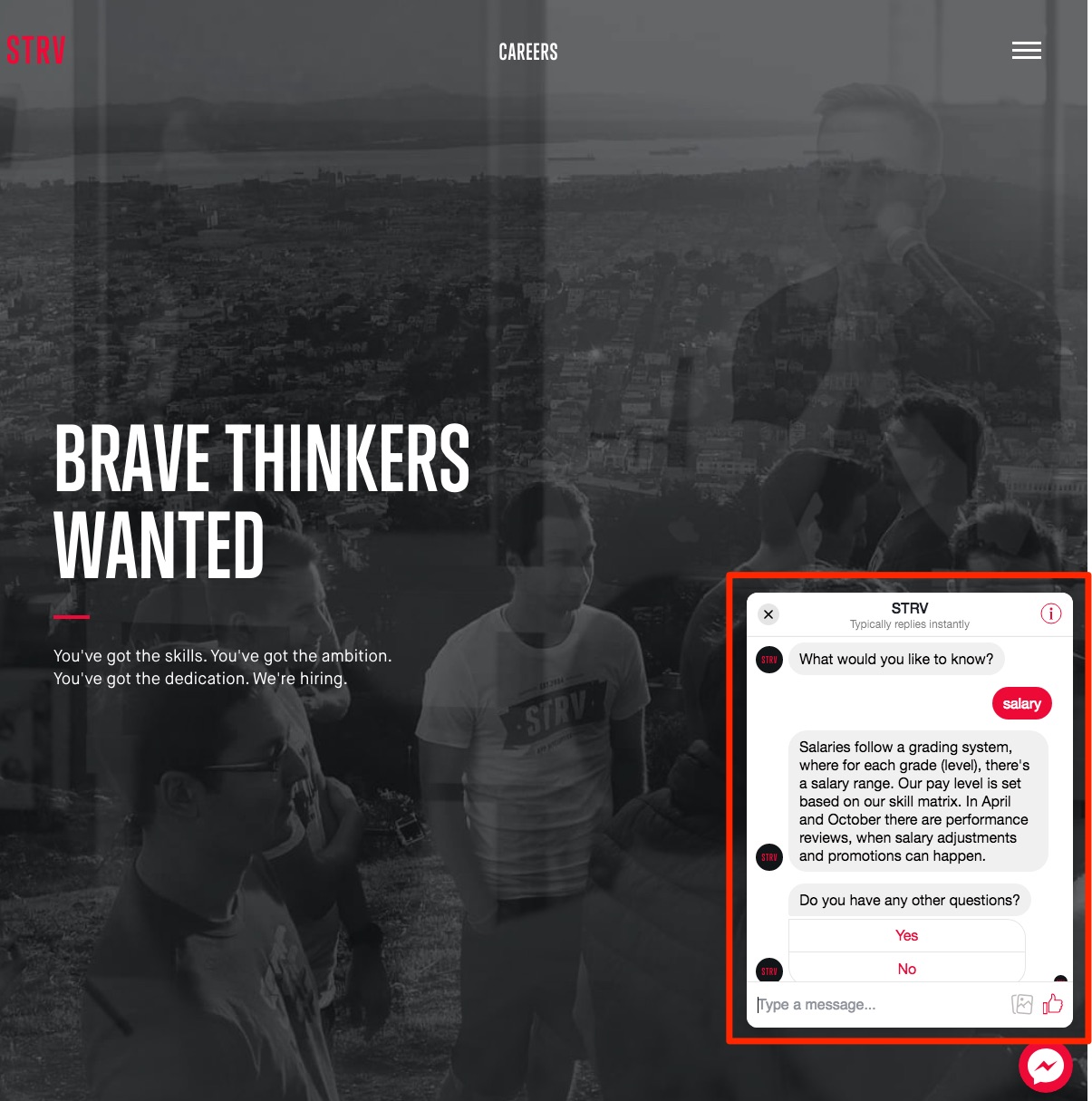
5. CDW
CDW’s chatbot jumps right into a conversation with the candidate to help build up its talent community. They ask for name and phone number first and then ask a set of questions (location, years of experience, timing of your interest in joining CDW, etc.) to narrow down a candidate’s interest.
They then tell the candidate that a recruiter will follow up with them.
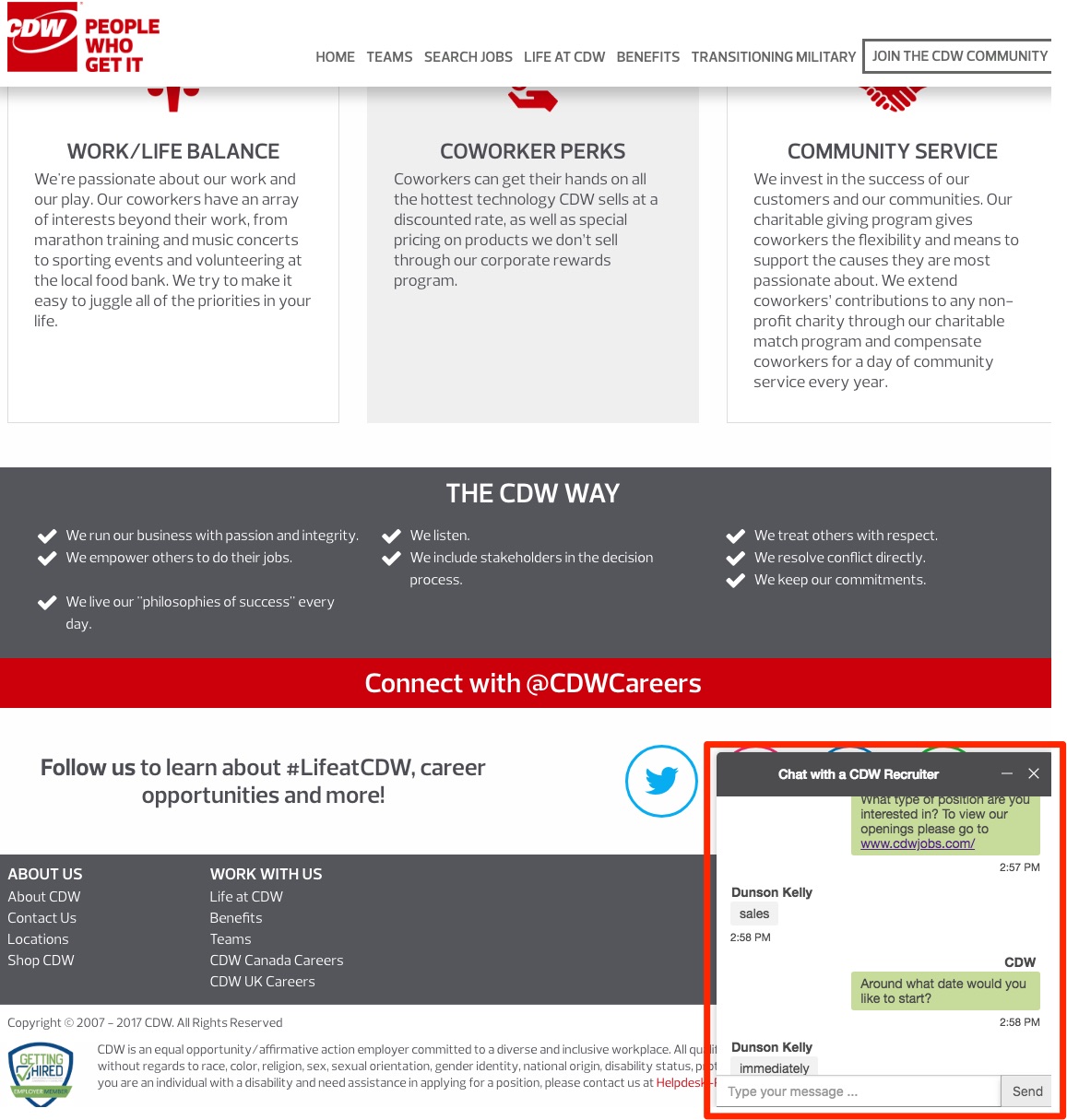
Finally, like anything, chatbots can backfire. If you don’t program them well, you’ll come across as me-too employer trying to be flashy without substance.
Also, some states in the U.S. (including California beginning in July of 2019) require that you identify your chatbot as non-human (unless it’s a real person).
Why I wrote this?
Ongig is on a mission to transform job pages and we care about anything that touches a job page.
[starbox]
